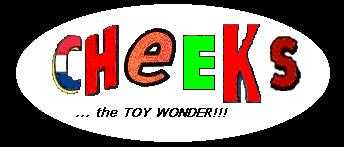
Unca Cheeks the Toy Wonder's Silver Age Comics Web Site!
THE WORLD(S) ACCORDING TO
I found
myself sorely tempted, in all honesty, to give Marvel's good resident doctor-cum-magus
a slot in the MISFIT CHARACTERS OF THE MARVEL UNIVERSE section of this
site, rather than his own "solo" entry. Not (he
added hurriedly) because I felt that Stephen Strange didn't necessarily
deserve the red carpet treatment, here at the Silver Age Shrine
and Community Car Wash, mind. As one of the "keystone" characters
of the Silver Age Marvel Comics universe (in my humble opinion), he merits
that much, certainly. No, no: my indecision, in this instance, was rooted, rather, in wondering whether
or not I should accord Dr. Strange the same treatment and regard as that
afforded the character by his own publisher. ... which
is to say: Not Much At All, really. As the sportscasters like to solemnly intone, during baseball games: "Let's look at the record, shall we...?" Dr. Strange -- i.e.,
Earth's "Sorcerer Supreme," and overall Master of the Mystic
Arts -- first appeared within the pages of the (otherwise) little-heralded STRANGE
TALES comic, in the early 1960's [see representative cover reproduction, accompanying]. As scripted (initially) by Stan Lee, and penciled by sui generis Silver
Age standout Steve Ditko, the character shared top billing alongside the not-terribly-
interesting tales of the FANTASTIC FOUR's Human
Torch/Thing duo. By and large, the majority of installments
for this latter feature were rather slapdash, humdrum affairs, knocked out (seemingly)
solely in order to have something other than old Millie the Model
reprints with which to round out any given issue. All the
more fortunate, then, for the quirky, semi-hallucinatory, time-and-space-
bending epics that were part and parcel of the Silver Age DOCTOR STRANGE
feature. The (comparative) lack of competition merely enabled them
to stand out in even sharper, more impressive contrast.
DOCTOR STRANGE
![]()
![]()
Not that they wouldn't have anyway, of course. As I mentioned earlier: the strip was being penciled by that most singular and lunatic of Silver
Age talents -- the decidedly off-beat Steve Ditko. ![]()
As interpreted by the aforementioned Mr. Ditko: the multiverse was as determinedly unsettling and rococo as a battery-powered doughnut. Extra-dimensional entities with names such as "Dormammu" could (and, often as not, did) hold iron sway over alternate realities while walking around with flaming puddings where their heads were supposed to be; and close-quarters mystic death-duels involved combatants wielding eldritch energies that capered and zoomed their respectiveways across the page like so many crack-addled quarterbacks.
If the DOCTOR STRANGE series was notable (and it was) for its nearly Dali-esque sense of alien, other-worldly otherness... then the credit must, rightly, be ascribed to the iconoclastic Mr. Ditko.
The character proved popular enough with the comics readership of the day that -- when Marvel finally allowed such latter-day heavyweights as Captain America, Iron Man and the Hulk to graduate into their own ongoing monthly series' -- Dr. Strange made the cut for similar "star status" treatment, as well... albeit, sans the artistic efforts of the quirky Mr. Ditko. However, the character -- under the penciling aegis of such luminaries as Marie Severin [See cover reproduction, above] and Bill Everett -- managed to thrive, regardless.
In particular, it was Marvel Bullpen mainstay Gene Colan -- later best known for his top-notch efforts on both DAREDEVIL and TOMB OF DRACULA -- who finally managed to add a hitherto-unknown component to the series' visual canon: an all-pervading, nearly palpable sense of gloom and dread. Shadows ran riot everywhere one turned; panel perspectives pitched and yawed; and the resultant storytelling proceedings were liberally awash in a miasma so thick and oppressive, one could practically fashion a nice cloth coat out of it. [See cover reproduction, above.]
The perceptive reader will have doubtless noticed that I have not -- at this
juncture -- made much mention of the actual DOCTOR STRANGE stories of
this period. There is a simple, straightforward reason for the omission: they don't merit mentioning because -- whether taken singly, or in sum -- said
tales were, overall, as airy and insubstantial as an eiderdown sandwich.
![]()
Make no mistake: it was the parade of superior artists tramping their successive ways through the issues of this title who were its (putative) "stars." DOCTOR STRANGE was -- and, with but a single, praiseworthy exception, always has been -- an "artist's comic"; the HEAVY METAL of its day.
Prior to examining that one storytelling exception, however... the brief tenure of one other notable Silver Age artist emeritus on thetitle (a ridiculously brief two issues -- !!) needs to be touched upon, here: that of legendary CONAN THE BARBARIAN penciler Barry (Windsor-)Smith.
As the attendant page sample makes manifest: the Pre-Raphaelite style renderings of the brilliant (if obsessive) Britisher suited the series to the proverbial "T"; so much so, in fact, that one could easily be forgiven -- upon reading the accompanying stories -- that, story-wise (in the immortal words of Gertrude Stein), "there's no there there." Penciling flash and filigree carry the day (to say nothing of the writers). As earlier attested: DOCTOR STRANGE was pretty much always more of an artistic "showpiece" title than a truly literary one.
Implicit in the phrase "pretty much always," however, is the concurrent proof of at least a single exception. In the case of the good Doctor... said "exception" was premiere 70's Marvel Comics scrivener, Steve Englehart.
On Page Two of this entry... we'll be taking a closer look at just what it was, ultimately, which rendered this "exception's" efforts on Dr. Strange's behalf so very...
... well... exceptional, really. ![]()
"MORE COMIC BOOKS," YOU SAY...?
The DC Comics Sub-Directory
The Marvel Comics Sub-Directory
The Miscellaneous Comics Sub-Directory
The "Gotta Find That DC Character" Menu
The "Gotta Find That Marvel/Miscellaneous
Character" Menu